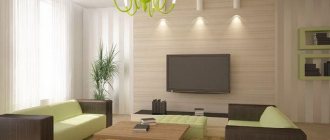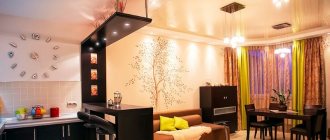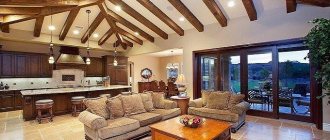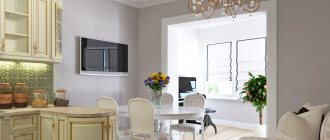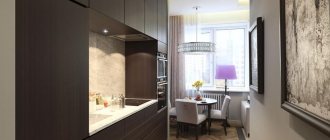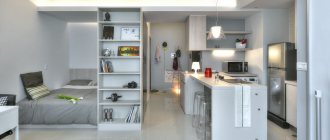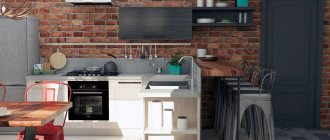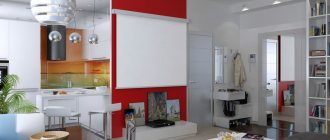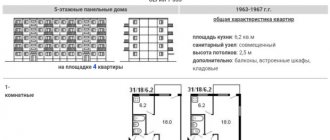Spotlights are compact lighting devices of varying power. They can serve as additional lighting, decorative lighting, and can also completely replace a chandelier. The location of lamps on a suspended ceiling in a living room, bedroom, or nursery is determined by what task they perform.
Depending on the task at hand, the power of the devices, the dimensions, and the appearance are chosen, because the decor of the lamps must match the style of the room.
Selecting spotlights for placement on a suspended ceiling
Not all lamps are suitable for a suspended stretch ceiling. The film fabric is very thin and light. Installation of spots involves installation on the base ceiling and the formation of holes in the canvas for lighting fixtures.
It is necessary to take into account another feature of the tension film: the material does not tolerate high temperatures. This eliminates the use of devices with too high power, as well as incandescent or metal halide lamps: the latter become very hot, which leads to deformation of the film.
Accordingly, the most important selection parameter is the type of light source and power:
- If an incandescent lamp is used, its power should not exceed 40 W. It is possible to install a lamp with a power of up to 60 W on a fabric sheet, since polyester is more resistant to temperature;
- The halogen lamp heats up even more. The maximum for PVC film is a product with a power of 20 W;
- LED devices do not heat up regardless of power, since this model includes special heat-dissipating devices.
Which lamps are best for a suspended ceiling in a living room or bedroom is determined by the height of the room and the design of the ceiling.
Lamps are classified according to installation method:
- overhead – the best option for stretch film . The device includes a mounting pad, which is installed on the base surface, and a housing. The hole under the PVC film lamps should be smaller in diameter than the body of the product;
- built-in - mounted on a frame base . The models are indispensable for multi-level combined ceilings. Lamps are installed inside ready-made holes in the partition or ceiling, in places where cables are connected. The device body already includes fastening elements for the lamp and clamps. This design makes it easy to replace the lamp or the entire device in case of repair;
- suspended - an option used when there is a larger distance between the base ceiling and the tension fabric . In this case, the product body is fixed to the power cable at an arbitrarily large distance. If there is a large mass of devices, it is recommended to pre-fix mounting rails to the ceiling - made of timber, for example,
Important ! When installing recessed luminaires on a tension fabric, only LED devices may be used.
Working in the light or relaxing requires different levels of lighting. This issue is also solved with the help of spotlights.
In this case, when choosing, you need to pay attention to the design features:
- Stationary lamps . Most built-in models are of this type;
- rotating - allow you to create directional lighting by changing the position of the body. When installing such a lamp, the installation area is pre-strengthened;
- gimbals include several LED elements, and therefore allow you to vary the lighting intensity and direction over a wider range;
- rotary-retractable - an interesting option, which, however, requires manual adjustment, since the body can only be pulled out with your hands;
- spots - equipped with a rotating mechanism and manually adjusted. Spots come in a variety of varieties, but most often they consist of several lamps installed on a common fastener.
Spotlights for suspended ceilings, the design of which is not replete with variety, have an appearance that is determined by a luminous surface and a decorative frame. The latter may not exist, which for most modern styles is an additional plus. The main advantage of the solution is its high functionality and the possibility of installation on a film ceiling.
Zoning using different ceiling shapes
The center of the room can be accentuated or visually shifted using an oval (circle) or square. These figures are made in levels of the stretch ceiling and create a visual effect in themselves. It serves as a kind of basis for the chandelier and will have an accumulative function, concentrating the light from it. If there are several lighting fixtures instead of one, this will create a more interesting visual combination. Then you can experiment with the thermal tones of the lamps - cold and warm. In any case, the combination of figure and light in it will create the impression of the center of the room. To create visual “domes” indicating the center of the selected zone, it is necessary to make the topmost “layer” of a lighter tone than the subsequent lower ones.
We calculate the number and location of lamps on a suspended ceiling
Models for suspended ceilings are selected not only by functionality or design. Taken together, all lighting fixtures must provide sufficient illumination, as well as create decorative effects when necessary. Accordingly, if spotlights play the role of complementing a chandelier, a certain arrangement is used. If lighting is provided only by these devices, their arrangement should be different.
To calculate the optimal location of lamps on a suspended ceiling, you need to know:
- type of lighting fixtures – fluorescent, LED incandescent lamps generate luminous flux with different intensities;
- room size - 1 spot can provide lighting of no more than 2 square meters. m. area;
- presence, number and area of windows;
- living room design - style also dictates certain requirements for the layout;
- the need for zoning - spotlights successfully solve the problem of dividing into zones.
Power calculation
There are certain lighting standards for all types of rooms:
- for the living room, at least 3 W per 1 square meter is required. m;
- in the bedroom there is no need for such bright lighting - 2 W per 1 square meter is enough. m;
- but in the nursery the lighting should be maximum - 8 W per 1 sq. m.
The photo shows the lighting of stretch ceilings with light bulbs.
Based on the norm, you can easily calculate the required total power. For example, with a living room area of 20 sq. m requires lighting with a power of 20 * 3 = 60 W. If there is no central lighting device, with a power of LED lamps of 5–7 W, you will need from 10 to 14 devices. Preference is given to an even number, but this condition is proportionate to the design.
The photo shows lamps for suspended ceilings in the living room.
Selecting a layout
Depends equally on the required level of lighting and on the style. In addition, you need to keep in mind additional requirements determined by the purpose of the room.
The living room is a room with a high level of lighting. It’s unlikely that you can get by with spots alone.
But if you use them together with a chandelier, you can greatly diversify the design of the room:
- lamps are used for zoning: in areas where bright lighting is required, devices are placed in a close group or high-power products are selected. In the recreation area, on the contrary, they are used to organize subdued soft lighting;
- it is preferable to place light bulbs on a suspended ceiling in a room in front of a wall with an interesting decor or furniture composition;
- 2 rows of point light sources along a shorter wall will allow you to visually correct the proportions of the room.
The photo shows lamps for suspended ceilings in the living room.
Bedroom – here they often do without a chandelier. Areas are marked with spotlights:
- A couple of pieces are enough above the bed to create very soft lighting;
- The wardrobe is highlighted with more powerful lighting fixtures. The person changing clothes must see himself in the mirror;
- the dressing table also needs good lighting.
Kitchen. The spots here provide sufficient illumination and serve as a universal tool for zoning. They allow you to visually change the proportions of the room.
The nursery assumes the best possible illumination, which is impossible without a central chandelier. Spot models provide additional lighting. Here, the placement of lamps is determined not so much by the beauty of the ceiling as by the needs of the child.
In the hall or corridor, the choice is small: the light is placed either around the perimeter or along the center line.
The choice of scheme is also influenced by the style of the room. So, in a classic-style living room, the placement should be symmetrical. In a hall with a modern design, an asymmetrical arrangement is allowed.
Light source placement options
There are a huge number of options for placing spotlights on the ceiling in combination with a chandelier. But this does not mean at all that the layout of light sources in the bedroom will be suitable for the living room. Each room has its own nuances.
Popular layouts.
Kitchen
Approaches to organizing kitchen lighting depend on its size: small or large.
Small kitchen. When lighting small kitchens, it is necessary to solve two problems: to visually expand the size of the room and to illuminate the food cutting area very brightly. Here you immediately need to abandon the idea of pendant lighting devices: a chandelier or a cascade of spotlights.
They do not allow bright lighting of all areas of the room. Darkened areas appear, causing the room to become even smaller. In addition, there is the problem of shadows that will interfere with the work area; additional lighting will have to be installed under the wall cabinets. You can add a few additional lamps to a small ceiling area, but they will look ridiculous.
A solution to problems, both at once, is the placement of spotlights on a suspended ceiling in the form of 3 lines: one in the middle (not the center of the room, but the space free from the kitchen unit), and two along the walls. This placement of light sources provides uniform, shadow-free lighting. If such a kitchen also has a low ceiling, we recommend using built-in lamps with a rotating mechanism. The zigzag pattern also gives a good result, but this is at the discretion of the apartment owners.
Big kitchen. Completely different tasks are solved here: general lighting, allocation of areas for work and lunch. The chandelier fits well into the interior and lighting scheme. It can be installed in the classic way, in the center of the ceiling, or above the dining table, highlighting the eating area.
True, there are two mutually exclusive approaches here: some argue that the dining area should be illuminated more brightly than the entire room (then a chandelier above the table is in place), others argue for dim light above the dining table. It’s hard to say who is right, but according to observations, many families have dinner by candlelight on weekend evenings. Dim lighting above the dinner participants, with general lighting turned off, fits perfectly into such family evenings.
In very large kitchens, in addition to the chandelier above the dining table, it is advisable to hang cascading lamps with a lighting power control (dimmer), which will allow you to create a romantic atmosphere, with subdued lighting, and a festive one, with bright light.
A scheme with a cascade of lamps above the dining area can also be used in medium-sized kitchens. But here the chandelier does not always fit into the interior, so you can abandon it in favor of built-in and overhead light sources.
Don't forget about the work area. Rotating lamps will help here, additionally illuminating the cutting tabletop and stove. The location of general light spotlights can be different: rectangle, zigzag, circle, oval, etc. Everything is determined by the imagination and taste of the owners.
Bedroom
The bedroom is an intimate place where romantic and relaxing moods dominate, replacing each other. In both cases, you need warm, muted, well-diffused light, which is what Western experts write about, in contrast to Soviet-era scientists who created lighting standards for different rooms in an apartment.
You can create a cozy environment that allows you to relax and have a good rest in various ways. Let's look at some of the most popular ones.
- The classic option is central lighting with a small chandelier and several built-in lamps located around it or along the perimeter of the bedroom. For young couples, you can use decorative LED lighting to create a romantic atmosphere.
- If there is a TV hanging on the wall, then the lamps are installed in a line at the head of the bed.
- When decorating an interior in a modern style (there are quite a few), two schemes are used: central , when a multi-arm chandelier is mounted in the middle of the room, and recessed lamps are installed along the walls; decentralized , when spotlights are located around the perimeter of the room, forming a rectangular shape, in the center of which a darkened area is created.
- If there is a dressing table in the bedroom, sconces are attached to the edges of the mirror. Ceiling lighting can be anything. The second option is to install rotary lights with a separate switch on the ceiling, which will additionally illuminate the area where makeup is applied.
The main thing when organizing lighting in the bedroom is brevity: no to a large number of lamps, no to bright light, no to several types or forms of spotlights. The only yes is the trimmer.
Hallway
In tall modern apartments, ceilings in the hallway and hallway are also stretched or suspended, which makes it possible to use built-in or surface-mounted lamps when organizing lighting. At the same time, there are few options for placing spotlights on the ceiling in a narrow and enclosed space.
- The main lighting is provided by single pendant lamps with matte shades; built-in lamps illuminate the area of the mirror and hangers. This placement scheme allows you to highlight the center of the room and divert attention from the corners, as a result of which the room visually increases.
- If you do not plan to use pendant light sources, it is recommended to install spotlights in the form of a “cross”, “zigzag”, or place them in a square or rectangle.
- A good example of hallway lighting is overhead spotlights, some of which have a rotating mechanism. Additional lighting of the walls with a darkened ceiling space visually expands the hallway (corridor).
- Glossy ceilings are additionally illuminated with lamps with a G9 base.
Living room
The living room fully corresponds to the expression: “it depends on the taste and color, there is no friend” when organizing lighting. The variability of lighting layouts using different lamps is simply off the charts. Therefore, it makes sense to talk not about specific types of design solutions when lighting a hall, but about how to correctly place accents when creating a lighting scheme.
Let's highlight the main tips:
- The living room should be brightly lit to achieve the effect of a spacious, open room, which can be achieved with a large number of lamps.
- Continuing the style of the room should be a priority. If it is a classic, then a chandelier is a must; if it is minimalism or “high-tech”, you can get by with linearly arranged spotlights; for romantic moods, the shape of a circle, wave, or zigzag is suitable.
- When using central lighting, where the chandelier dominates, built-in lamps must be placed along the walls, giving them auxiliary lighting functions: illumination of various zones, focus on one of the pieces of furniture, additional lighting of the chair where literature and the press are read.
- Spotlights allow you to divide the room into zones, which is very important for studios, where the living room is also an office, a bedroom, and a dining area.
- There should be separate switches with a trimmer for the chandelier and spotlights. Moreover, the more of them, the more effectively you can use the capabilities of the built-in light bulbs.
- Lamps with different light flows look impressive.
- In a room with a square or rectangular shape, where there are no protrusions and niches, as well as rounded corners, symmetrical schemes that emphasize the geometry of the room are best suited.
- A low ceiling will be visually raised by circles of lamps installed one inside the other. To increase the effect, the size of the light sources and their power towards the center should decrease.
Bathroom
With the advent of modern finishing materials, suspended and suspended ceilings in bathrooms have become a frequent feature, which allows them to be illuminated with built-in and overhead lamps. However, the small area of the room does not allow imagination to run wild.
A small but even number of lamps are placed throughout the ceiling, equidistant from each other and the walls. The washing area should be additionally illuminated, but not from the ceiling, but with the help of wall lamps. Round shaped lamps look beautiful.
Children's
Considering that a children's room is at the same time a school classroom (there is a desk for doing homework), a playroom, and a bedroom, such a room needs to be illuminated using the zoning method, when each group of lighting fixtures illuminates a specific place in the room (desk, play area, bed).
Naturally, they should be turned on separately from each other. But this does not mean that there should not be general lighting in the children's room. It can be central - a chandelier or diffused - only built-in spotlights.
The children's room is the only room where lamps can be placed randomly or in a “Z” shape. A ceiling designed in the shape of a “starry sky” also looks impressive in a nursery, but this is only if the family budget allows.
When developing a plan for placing a chandelier and recessed lamps on a suspended ceiling, as well as on a suspended ceiling, there are no dogmas - so fantasize and dare. The only thing to remember: placing light sources somewhere under other conditions (room size, wrong types of lamps) can have the opposite effect.
Minimum distance between lamps on a suspended ceiling
The tension fabric has a number of design features; when installing point models, they also need to be taken into account:
- Lamps on the suspended ceiling in the hall should be distributed so that there is at least 20 cm from the wall to the spot;
- between built-in models the distance is maintained at least 30 cm;
- if the tension fabric includes several fragments, lamps cannot be mounted at their junction. They can be placed no closer than 15 cm from the seam.
How the lamps are placed on the suspended ceiling in the hall does not depend on their power. However, when choosing a placement scheme, you need to divide the groups in advance into the main ones - with higher power, and the secondary ones - less powerful, used, rather, for illumination.
Types of ceiling lighting
Before considering the basic requirements and rules for arranging lamps on the ceiling, we will determine the types of devices suitable for apartments and private houses. On the ceiling you can see:
- A chandelier is a traditional lighting fixture, in most cases mounted in the center of the ceiling. Consists of several horns with sockets for many light bulbs. Well illuminates the room.
- Built-in spotlights. Also called "spots". Install exclusively on a suspended ceiling. Recess part of the body into the tension structure, and leave the decorative front side visible. They are often mounted around the perimeter of the ceiling or in certain areas (reading, applying makeup).
- Illumination - decorative lighting. LED strips are used in apartments; on the streets you can find more varieties, including neon bulbs.
- No less popular are wall and table lamps and floor lamps.
Popular layouts for placing lamps on a suspended ceiling in combination with a chandelier
The location of additional lighting devices is primarily determined by the position of the central one - the chandelier. There are options here too: in a classic small living room, the chandelier is fixed exactly in the center, and spotlights are placed symmetrically around it. In modern styles, a chandelier marks the most important area of the living room, and lighting is grouped by zone. In this case, asymmetry is allowed.
The options for placing spotlights on a suspended ceiling are as follows:
- An oval is a great way to visually correct the proportions of a long and somewhat narrow living room . A chandelier is installed in the center, and spots are placed around in the form of an oval. Part of the ceiling may be darkened;
- circle - ideal for a square living room;
- 2 semicircles - with modern design, arcs can have different lengths and bending radii . A simple and at the same time extremely effective way to visually correct the proportions of a room;
The photo shows a circular arrangement of spotlights on a suspended ceiling in the hall.
- framing - this means installing lighting on a plasterboard ceiling box around the perimeter. The scheme emphasizes the proportions of the room;
- A classic option for a kitchen or small bedroom is to install spotlights parallel to two shorter walls. In this way, they achieve visual expansion of a narrow room;
- corner – point models are fixed along the corner symmetrically or asymmetrically. This method is only permissible in modern styles, and is very popular when zoning;
- grouping - applicable in a studio apartment . At the same time, in the guest area, for example, a chandelier is hung, and in the area where the owner of the home is resting, a group of lamps is placed;
- an arbitrary combination is also usually asymmetrical . In this case, a row of lamps is placed in the form of a wave, zigzag, semicircle, and so on.
The photo shows how to place spotlights on a suspended ceiling in the hall.
When choosing a pattern, the nature of the canvas is also taken into account. The glossy film reflects light, so you'll need fewer fixtures to illuminate your living room or bedroom. Matte or velvet fabric even absorbs light: more lamps are needed here.
Examples of design solutions
Zoning a room is not always associated with the installation of blank walls. Sometimes transparent structures separate the recreation area from the kitchen, while becoming one whole. The cooking area fenced off with glass and a wall is perfectly visible, but the smells do not irritate those relaxing on the sofa. The photo below shows an example of a beautiful interior in light colors, where part of the room is separated from the kitchen by a glass wall
A glass wall unites and divides space
This solution expands a small room, while the noise and smell from cooking do not penetrate into the living room. The stretched canvas overhead looks harmonious inside the plasterboard box, and the glossy surface matches the reflections on the partitioning glass wall. A diverse lighting system complements the decor, making the atmosphere festive, bright and darkened romantic.
Another striking example of how to partition a room is shown in the photo below. Part of the large hall is fenced off with bright, contrasting plastic. The resulting dining area allows you to eat food calmly and comfortably. The soft illumination of the ceiling in combination with natural light creates an elegant atmosphere; the reflected light from the green plastic plays beautifully with reflections on the table. At first glance, the eclecticism of urban plastic does not fit with the landscape outside the window and the pastel colors of the interior
A contrasting plastic wall highlights the dining area
But we can assume that the inhabitants like the explosive contrast of the wall, from which it is difficult to take their eyes off. Bright plastic combines with the canvas above the head and undoubtedly decorates the room, becoming a bright and unforgettable element of the decor.
Layout diagrams of lamps on a suspended ceiling without a chandelier
How to place lamps on a suspended ceiling without a chandelier also depends on the style and its proportions. Sufficient lighting will require more bulbs and higher wattage.
Spot layouts can be either symmetrical or asymmetrical. Filling the central section of the stretch ceiling is optional.
It is even possible to evenly place spotlights over the entire area, although this is not the most successful way:
- two semicircles are the optimal way to illuminate a living room or nursery using only spotlights. By varying the power of the lamps and the bending radius of the arc, uniform illumination is achieved;
- cross-shaped arrangement is an original option, suitable for a room of any proportions and sizes.
The photo shows the arrangement of light bulbs on the suspended ceiling in the hall;
- wave or zigzags - relevant for rooms with complex configurations. This arrangement allows you to create lighting in all areas of a pentagonal, highly elongated room, kitchen or living room with a bay window;
- arbitrary grouping - spots are placed in the form of a combination of a circle and arcs, an oval and a circle, waves and a frame around the perimeter. A big plus of this option: the ability to select the lamp power depending on the zone;
- drawing - performs the same functions as grouping, but at the same time the spots form some kind of figure.
The photo shows spotlights for suspended ceilings in the living room interior.
When choosing a scheme, the general principle is followed: the work area should be as saturated with spots as possible, and in the recreation area, the decorative effect of the lamp is more important than its power.
How to install spotlights on a suspended ceiling
Installation of spots on a tension fabric involves attaching the lamp itself to the base ceiling. Lamp manufacturers have made installation as easy as possible. The product is supplied with an installation platform and the necessary fasteners. In addition, when attaching to PVC film, you will also need a thermal ring.
The procedure is as follows.
- Mounting points are marked on the base ceiling. Holes for the dowel are first made in the concrete surface; the installation platform is simply secured into the wood with self-tapping screws.
- Lay a cable to each output and secure it to the ceiling with brackets or clamps.
- After completing other preparatory work, stretch the PVC film.
- To prevent heating of the canvas, thermal rings are used. They are selected in advance according to the diameter of the lamp. After the suspended ceiling has been installed, the lamp mounting areas are marked.
- Special glue is applied to the thermal ring and secured to the canvas. The glue sets within 3–5 minutes. Then the fabric inside the ring is cut and its excess is removed.
- The lamp is inserted into the resulting hole, making sure that the spring antennae are behind the installation ring. If there is a small gap left between the canvas and the edge of the body, there is no need to remove it.
If spots are installed on a tire, the installation is done slightly differently. The holes are made for suspensions, that is, there is no need for thermal rings.
Questions about joining with suspended ceilings
There are situations when the ceilings are already covered with polyvinyl chloride film or fabric, after which the question of enclosing part of the room arises. This is a difficult situation, and professionals recommend avoiding this, that is, installing canvases if the structures for laying out have already been built. The solution is to leave a wooden beam fixed to the ceiling above the fabric sheet. Then the enclosing structure can be attached to the beam, but the question is not so simple. Here are some recommendations for the technology of fixing to the beam:
- In the places where the trim is attached to the fabric, rings are installed, as for lamps.
- The rings are attached with a special glue for the corresponding fabric (you can try “moment” on a cyanoacrylate base or superglue).
- If you don’t find the rings you need on sale, use thin plastic (1-2 mm) or foil tape.
- Holes are cut in the fabric sheet, and fasteners are made through them.
A beam left on the ceiling for further fastening
When installing a film or fabric surface, consider how the fencing structure will be attached to the ceiling. Since the canvases are fixed in two ways:
- The canvas occupies the entire area of the room, and then the profile holding it is attached along the perimeter to all walls, including the partition wall.
- The fabric ceiling is installed inside a plasterboard box, then the fixing baguette is attached to the box, which must articulate with the partition wall.
In any case, it is better to turn to professionals to correctly install suspended ceilings if there are or are planned partitioning structures.

